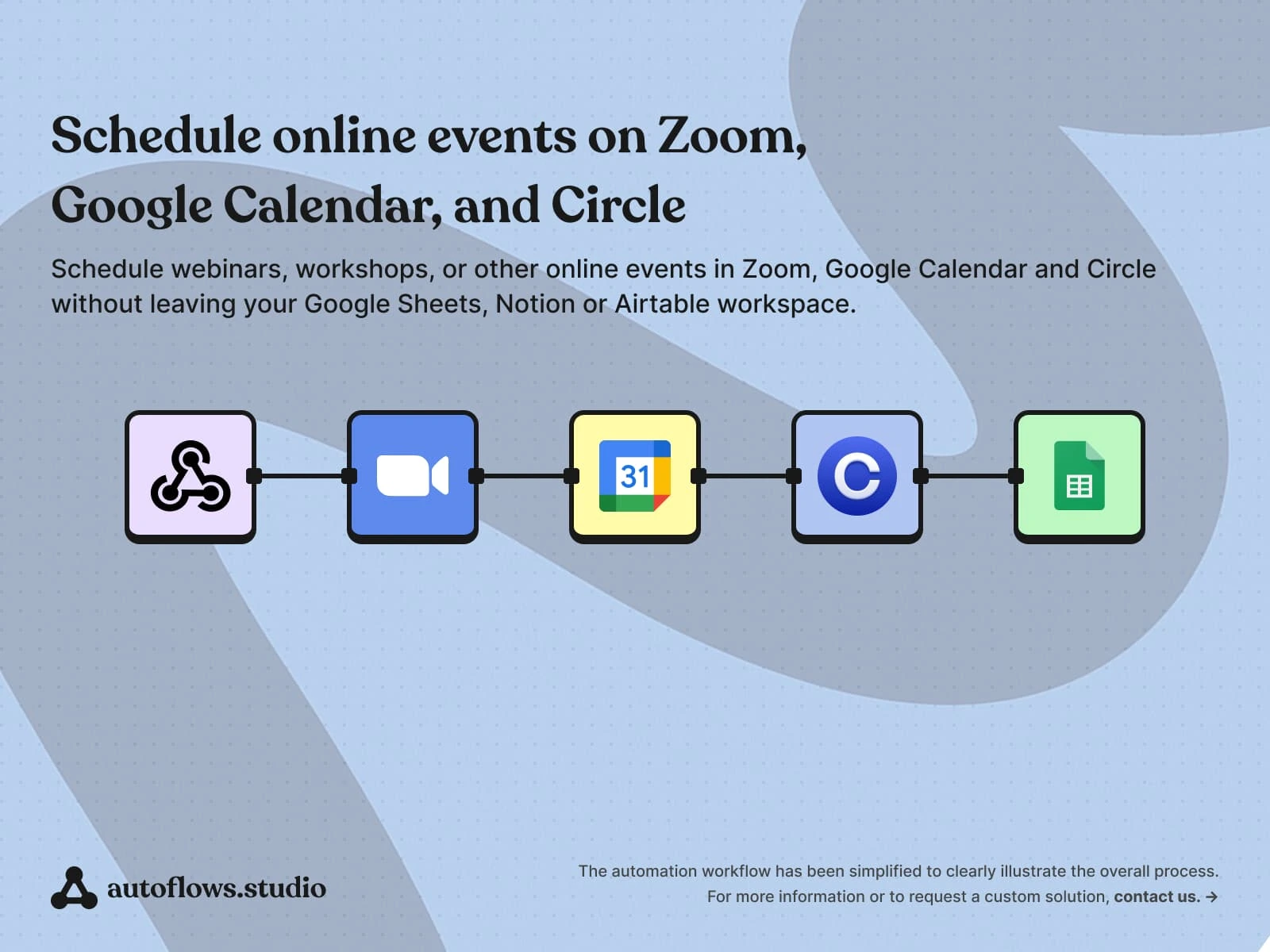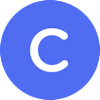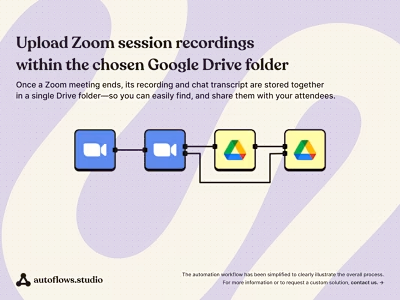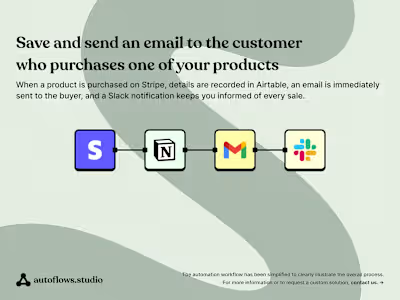Schedule online events on Zoom, Google Calendar, and Circle

Managing a large community that regularly hosts both online and in-person events can sometimes feel like herding cats—especially when you’re juggling multiple platforms such as Zoom, Google Calendar, and Circle.
To address this headache, I created an automation that integrates these three tools. Instead of manually updating each platform every time a new event or training session is added, this workflow centralizes the scheduling process.
Short Overview and Purpose
My primary goal was to unify the workflow for a community that organizes frequent events. Because the group leverages three distinct platforms—Zoom for online sessions, Google Calendar for time management, and Circle for community engagement—each event had to be entered manually across all three systems.
While that might not sound like too big a chore for a single event, it becomes a genuine time sink when you’re scheduling multiple sessions or recurring trainings. All it takes is one small oversight—like forgetting to update the event date on Circle or forgetting to add the Zoom link in the Google Calendar—for the entire schedule to get out of sync.
Scope and Target Audience
The target audience is quite broad:
Event Organizers: Anyone in charge of planning and announcing new sessions.
Online Educators: Instructors who regularly conduct virtual classes via Zoom and keep track of attendance or session details.
Community Managers: Those who foster engagement on platforms like Circle, posting event announcements or workshop details for group members.
Since there’s no inherent limit to how many events or classes can be scheduled, the automation needed to be flexible enough to handle dozens, if not hundreds, of entries per month. Moreover, the system had to be easily adaptable for either small circles of a few dozen people or large communities with thousands of members.
Tools and Technologies
This automation solution utilizes:
Make: The primary automation platform to connect all the services.
Zoom: For scheduling sessions and generating meeting links.
Google Calendar: To mark all event dates and set up reminders.
Circle: A community platform where members can see upcoming events, ask questions, or join discussions.
Google Sheets: Acting as the main data source, it stores event names, dates, times, and other crucial details (like the Zoom link once it’s created). We could have used Notion or Airtable, but Sheets was chosen for its simplicity and familiarity.
Here is the basic flow:
User or Instructor Inputs Event Data: They list the event title, dates, times, and any relevant notes in a Google Sheet.
Make Retrieves Data: Make triggers automatically when new or updated rows appear in the Sheet.
Create Events on Zoom, Google Calendar, and Circle: The automation creates corresponding calendar entries (with the Zoom link attached) and posts an announcement or schedule listing on Circle.
Update the Sheet with Relevant Links: Zoom meeting IDs and links, plus Circle announcement URLs, are added back to the Sheet for future reference.
Outcome
The end result has been a significant boost in organizational clarity. Instead of multiple spreadsheets, separate emails, and manual postings, the entire community relies on one “source of truth”: the Google Sheet. When event organizers add or change event details there, it’s automatically reflected in Zoom’s schedule, Google Calendar entries, and Circle’s event announcements.
This consistency helps avoid the confusion of having one event posted at 7 p.m. in one place and 7:30 p.m. somewhere else. It also spares instructors from having to replicate their efforts for each platform.
Contact
If you find yourself scrambling to keep events aligned across multiple platforms, this type of system can be a no-brainer solution.
And if you’re considering a similar project or want help refining your existing process, don’t hesitate to reach out.
Small tweaks in workflow automation can pay big dividends in clarity, professionalism, and peace of mind.
Like this project
Posted Mar 30, 2025
All events are now created and updated in one place, saving time, drastically cutting confusion and manual rework across Zoom, Google Calendar, and Circle.
Likes
0
Views
5
Timeline
Oct 18, 2024 - Oct 22, 2024






